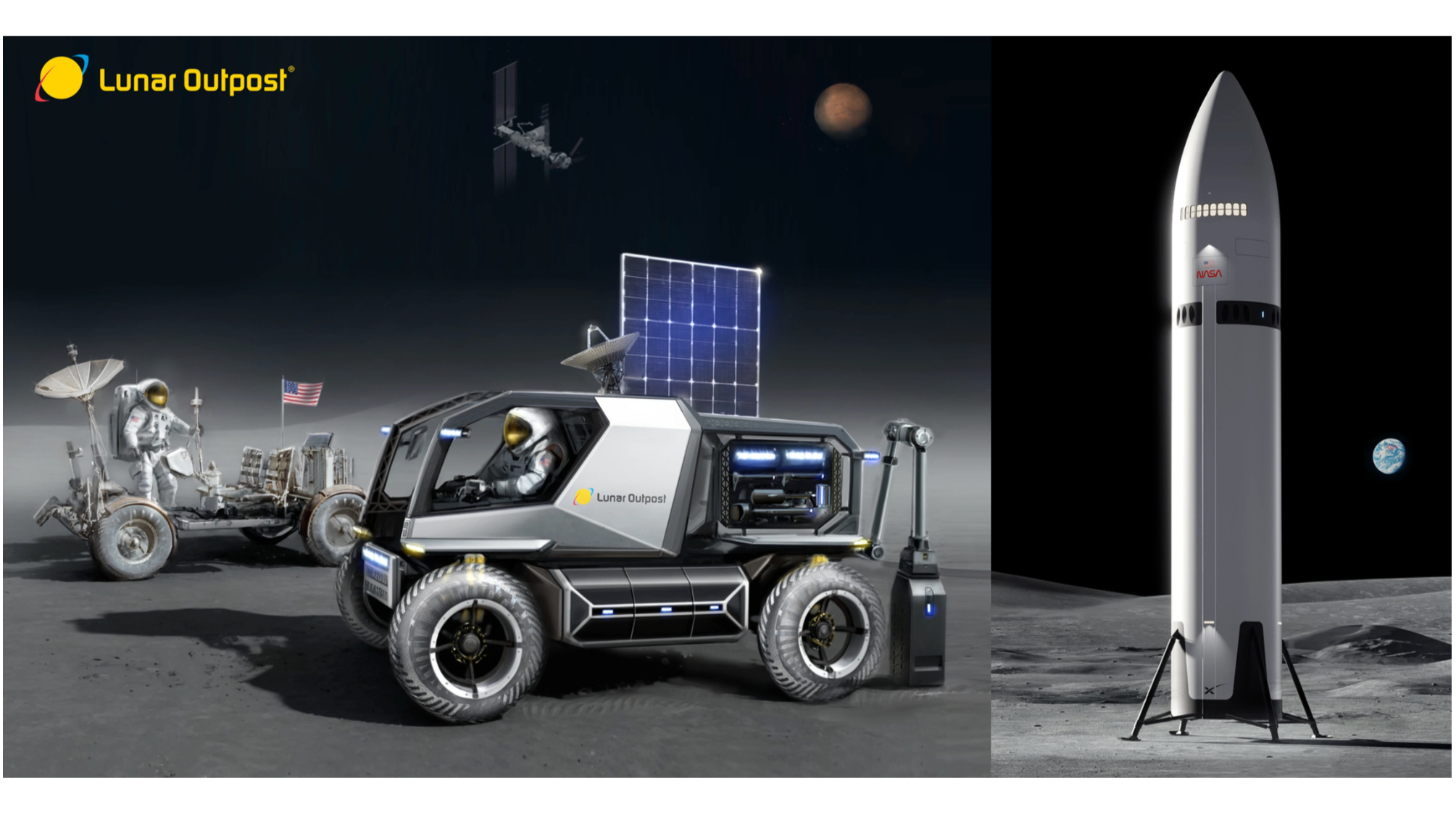
SpaceX's Starship megarocket just added another moon mission to its docket.
Colorado company Lunar Outpost announced today (Nov. 21) that it has chosen Starship to launch its new moon rover, known as Eagle, and land the wheeled vehicle on the lunar surface.
The news comes two days after the 400-foot-tall (122 meters) Starship flew for the sixth time ever, on a suborbital test flight from Texas that achieved all of its main objectives.
"Having experienced the recent groundbreaking Starship test flight firsthand, we're confident that SpaceX is advancing the most capable launch system ever created and will successfully land our Eagle vehicles on the surface of the moon," Lunar Outpost founder and CEO Justin Cyrus said in a statement today.
"This contract is instrumental to accelerating Lunar Outpost's mission of enabling a sustainable human presence in space, and we look forward to working with SpaceX to make that happen," he added.
Terms of the contract were not disclosed.
Related: NASA picks 3 companies to design lunar rover for Artemis astronauts to drive on the moon
Lunar Outpost is working with Leidos, MDA Space, Goodyear and General Motors on Eagle. This "Lunar Dawn" team is one of three private groups that NASA picked this past April to develop a version of the Lunar Terrain Vehicle (LTV), the rover that the agency's Artemis astronauts will drive on the moon beginning in 2030 or so.
The other two teams are led by Intuitive Machines and Venturi Astrolab. That latter company also selected Starship to launch its LTV rover, known as FLEX ("Flexible Logistics and Exploration"). And NASA picked Starship to be Artemis' first crewed lander; it's currently scheduled to deliver agency astronauts to the lunar surface for the first time on the Artemis 3 mission, in late 2026.
The three private teams will continue developing their rover concepts until next spring. They will then be eligible to compete for a new NASA contract, the winner of which will send its rover to the moon on a test mission ahead of the Artemis 5 flight, which is currently scheduled to launch in 2030.
And there will likely be only one winner, at least at first.
"NASA anticipates making an award to only one provider for the demonstration," agency officials wrote in an April statement announcing the three selected LTV teams. "NASA will issue additional task orders to provide unpressurized rover capabilities for the agency's moonwalking and scientific exploration needs through 2039."
As that statement notes, the LTV will be unpressurized, meaning astronauts who ride in it will need to wear spacesuits. But the new rover must also be capable of autonomous operation, according to the agency.
NASA plans to buy LTV services, not the rover itself, just as it purchases cargo and crew missions to the International Space Station from SpaceX and other providers, who retain ownership of the hardware.







